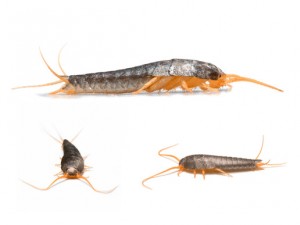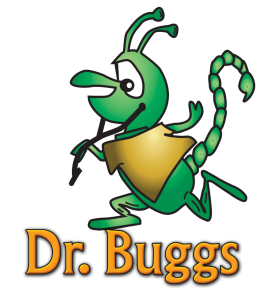BUGGS ON THE WALL
Ants
Ghost Ants
Ghost Ant (Tapinoma melanocephalum)
Ghost ants are small, 1.5mm, ants that are generally sweet feeders, but may also feed on dead insects. These ants are well established throughout the state of Florida. Ghost ants invade houses from the outside and usually harbor inside where they feed on sweets in the house. Workers are monomorphic, which means they are all the same size. This ant is easily recognized due to its peculiar color markings and small size. The legs and abdomen are transparent.
BEHAVIOR
They exhibit a high need for moisture, and although colonies are usually established outside, they can readily harbor inside domestic houses during dry conditions. Worker ants form trails by taking food back to the nest, and the queens are communal, so there can be several queens in a colony, and several thousand workers. When workers are found trailing, their movement is slower and deliberate. New colonies can be formed when a queen and some workers migrate away, which is called budding.
CONTROL OPTIONS
The control of Ghost ants can be implemented by treating wall voids, and electrical outlets where they trail. Liquid baits with boric acid in a sucrose solution have proven to be very effective. These baits can be effective outdoors as well as indoors. Sanitation is the best approach to ant control because any food particles can be detected and attract the ants.
Red Imported Fire Ant
Red Imported Fire Ant (Solenopsis invicta)
The Red Imported Fire Ant (RIFA) is more aggressive than most native ant species and have a painful sting. RIFA is native to central South America, but has been established in the US. They are small but highly aggressive ants. They inject a necrotizing, alkaloid venom when they sting. The stings result in painful, itchy, and persistent pustules, and sometimes in severe allergic reactions. RIFA colonies are extremely destructive. They dominate their home ranges due to their large numbers and aggressiveness. The lack of natural enemies results in population booms in areas they invade.
LIFE CYCLE AND CONTROL
Fire ants live in colonies that may have 100,000 to 500,000 ants. The queen of the colony can lay from 1500 to 5000 eggs per day, never leaves the nest and can live for many years. Worker ants take care of the queen and her eggs, build the nest, defend the colony, and find food. Preferred food of fire ants consists of protein-rich sources such as insects and seeds. Winged male and female ants fly from the colony in the spring and summer to mate in the air. The males die and the females become queens that start new colonies.
For professionals and residents carrying out their own management programs, ant baits are recommended because they are inexpensive, highly effective, and safe for the environment.
White-Footed Ants
White-footed Ant (Technomyrmex difficilis)
White-footed ants have black or brown colors with pale, yellowish feet and one-segmented waists. They generally range from 2.5 to 3 millimeters in length. White-footed ants are sweet feeders and tend to feed on plant secretions and honeydew produced by aphids, scales and mealybugs, white-footed ants protect these species, which can lead to agricultural problems. Although these ants don’t bite or sting, a colony of white-footed ants can contain 8,000 to 3 millions ants, which can make them a nuisance. Although a colony may be made up of a million individuals, they usually do not all nest in one location. Colonies tend to be spread out as interconnected satellite colonies. Therefore, ants within the same colony may be found nesting at several locations around a structure. Nesting sites usually contain eggs, the developing offspring, and pupae as well as adult ants.
LIFE CYCLE AND FEEDING
White-footed ant colonies produce winged males and females which, at certain times of the year, leave their nest to start new colonies. Winged females who mate with winged males during a mating flight found new colonies. Winged males mate once before they die. Winged females die about 400 days after starting a colony. The queen is then replaced by a wingless daughter that mates with a wingless male who is capable of multiple mating. Although White-footed ants are strongly attracted to sweet foods they will also feed on dead insects and other protein. Frequently, White-footed ants find their way inside wall voids where they follow electrical cables and emerge into various rooms, especially kitchens and bathrooms, where liquid and solid foods can be encountered resulting in heavy trailing activity.
CONTROL
White-footed ants are an extremely difficult pest to control due to the large size of its colonies. Baits have shown to be the effective management method to date for White-footed ant control. Residual and systemic sprays to vegetation surrounding structures can also help by eliminating honeydew producing insects. A key aspect of White-footed control involves trimming trees and shrubs surrounding the structure to stop ants from trailing from the ornamental onto the structure. The best policy is to not have any ornamental touching the structure.
Big Headed Ants
Big Headed Ant (Pheidole megacephala)
Big-headed ants are light brown to dark reddish brown, and have two sizes of workers. These ants can be found nesting in the soil around homes in many areas of the United States. They have become a persistent problem in the South, with reports of workers invading homes in their search for food. The Big headed ant is omnivorous, feeding on sweet liquids such as honeydews, dead insects, and soil invertebrates. Foragers will quickly recruit nest mates to a food source. In houses, they seem to prefer protein foods, such as meats and peanut butter, but will also feed on greases and sweets, such as fruit juices. The Big headed ant can be found nesting in disturbed soils, lawns, flowerbeds, under objects, such as bricks, cement slabs, or flower pots, around trees or water pipes, along the base of structures, and walkways, where displaced soil is usually observed from the action of ants digging below the surface.
The best approach to ant control in the home is cleanliness. Any type of food or food particles can attract and provide food for ants. Store food in tight containers. Remove plants that can attract ants or control aphids, whiteflies and other insects that produce honeydew. Reduce moisture sources, including condensation and leaks.
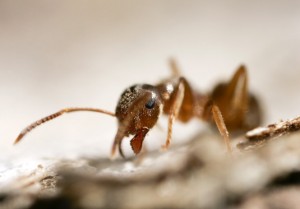
Lice
Head Lice
Head Lice (Pediculosis humanus capitis)
The head louse is a wingless parasitic insect that feeds on human blood. On humans, they are typically found on the scalp or eyebrows. Head lice also infest other mammalian animals, and birds. Head lice infestation is a major public health issue in children. This problem can generally be spread in schools, offices, or daycare centers by direct human to human contact.
General Biology
Pediculosis humanus capitis are egg laying insects that lay eggs on the hairshaft near the scalp. Once they hatch, they feed on blood, reproduce and spend their entire life on their host. Newly hatched nymphs will molt three times before reaching the sexually-mature adult stage. All stages of the louse are blood feeders and can feed up to four times a day.
CONTROL OPTIONS?
6-12 million people are treated annually for head lice in the US. Chemical treatments, natural products, combs, shaving, hot air, and silicone-based lotions are typical control methods for head lice. Lice on the hair and body are usually treated with medicated shampoos or cream rinses.
Natroba (active ingredient: Spinosad) has been recently approved for control of Head Lice. Follow this link for more information.
http://www.fda.gov/NewsEvents/Newsroom/PressAnnouncements/ucm240302.htm#.Tmb2LjgVRr4.email

Spiders
Golden Silk Spider
Golden Silk Spider (Nephila clavipes)
The Golden Silk Spider, Nephila clavipes (Linnaeus), is a large, greenish yellow to orange and brown spider with a white to silver cephalothorax, and tufts of hair, on legs, which may span nearly 5 inches. They are also known as Banana spiders because of the shape of a body (abdomen), which may be 1.5-2 inches long. People, from hikers to homeowners, in Florida and the southeastern U.S., are very familiar with the large golden webs of this spider. Typical prey consists of flying insects like moths, beetles and bees.
General Biology
Nephila clavipes is the only species of the genus, and the largest non Tarantula spider found occurring in the Western Hemisphere. It is found throughout Florida, as far north as North Carolina, south through the Gulf States, and Argentina in South America.
Golden Silk spiders produce one generation per year in North America. Adult males are present from July to September, with the majority of females maturing in August and found late into the fall, when they produce at least two large egg sacs consisting of several hundred eggs in a basket of curly yellow silk. More egg sacs may be produced in warmer climates.
The webs of these spiders are finely meshed and 1-2 meters in diameter. They are often strung between trees and shrubs or eave lines and windows, resulting in disturbing encounters between spider and unwary human. Fortunately, they bite only when held, squeezed or otherwise threatened, and the bite generally produces localized pain with slight redness. The net result is less severe than a bee sting and symptoms generally disappear in a couple of days.
Control Options
Golden Silk spiders are generally harmless and non-invasive. They can be relocated by using a broom to place the spider in a tree or shrub away from the home or walkway. Webs are not torn down and replaced periodically by the spider, so relocation is an effective, chemical free control method. If chemicals are preferred, be sure to use a chemical labeled for spider control.
ALWAYS READ AND FOLLOW THE LABEL DIRECTIONS FIRST.
Brown Widow Spider
Brown Widow (Latrodectus geometricus)
Brown widow spiders (latrodectus geometricus) can vary from light tan to dark brown or almost black and may have differing markings such as white, black, yellow, brown and even orange on the back of their abdomen. The widow spiders are the most venomous spiders in the United States, because their bites are sometimes fatal.
General Biology
Brown widows can be located by finding their eggsacks, which are easily identifiable. They resemble a sandspur, having pointed projections all over, and they are sometimes described as “spiky” in appearance. Eggs hatch in approximately 20 days. Brown widow spiders can be found under stones, about stumps, in holes in the ground, and around building. The brown widow builds its web in secluded, protected sites around our homes, often very near our presence. The brown widow has a prominent “hourglass” marking on the underside of the abdomen. The venom released from a brown widow is considered more toxic than the black widow, but when it bites, it doesn’t release as much venom as a black widow does.
Control
Sanitation is the most important strategy in reducing widow spiders’ infestations around the home. Routine cleaning is the best way to eliminate spiders and discourage their return. Around the home, potential hiding places such as firewood, building materials, and other debris lying on the ground should be moved away from the building, disposed of, or treated with chemical residues. Any cracks, holes, or spaces around windows and doors should be sealed or fitted with weather stripping. Spot treatment applications of a residual insecticide to locations where spiders build their web sites can be helpful to prevent new spiders from becoming established.
Due to the venomous and dangerous nature of brown widows, it is recommended that you call a pest professional to control any infestation.

Flies
House Fly
House Fly (Musca domestica)
The house fly is known pest of both homes and farms. Not only are house flies a nuisance, but they can also transport disease-causing organisms. Excessive fly populations are not only an irritant to farm workers but, when there are nearby human habitations, a public health problem could occur. The pathogens commonly transmitted by house flies are Salmonella, Shigella, Campylobacter, Escherichia, Enterococcus, Chlamydia, and many other species that cause illness. These flies are most commonly linked to outbreaks of diarrhea and shigellosis, but also are implicated in transmission of food poisoning, typhoid fever, dysentery, tuberculosis, anthrax, ophthalmia, and parasitic worms.
General Biology
Adult flies usually live up to 20-25 days, but can live over a month. The house fly has a complete metamorphosis with distinct egg, larva or maggot, pupal and adult stages. Houseflies feed on feces, open sores, sputum, and moist decaying organic matter such as spoiled food, eggs and flesh. Houseflies can take in only liquid foods. They spit out saliva on solid foods to predigest it, and then suck it back in. They also regurgitate partly digested matter and pass it again to the abdomen.
Control
Sanitation, use of traps, and insecticides are common methods to control house flies. An integrated pest management program can be put in place for commercial and residential areas where house flies pose as a continual problem.
Drain Fly
Drain Fly (Psychodidae)
The drain fly is a small true fly with short, hairy bodies and wings giving them a “furry” moth-like appearance. They are common nuisance in/around homes and commercial buildings, including sewage treatment plants. Adult drain flies are typically nocturnal and associated with damp habitats. Adult drain flies have long antennae and leaf-shaped looking wings. Since these flies originate in filthy conditions, there is the possibility of human health disease transmission.
General Biology
Adult drain flies are small (1/6 to 1/5 inch long), fuzzy, dark colored insects with the body and wings densely covered with hairs. They are weak fliers and fly only a few feet at a time. Drain flies breed in polluted, shallow water or highly moist organic solids. You will find the eggs, larvae and pupae in the muck, slime, or gelatinous film often accumulating on the sides of drains and condensate pipes for air conditioners, in the sewage filtration tanks, septic tanks and moist compost.
Control
The key to solving a drain fly problem is to find and eliminate the source, which are the areas of excess moisture and a buildup of organic debris. The most effective method to correct (or to prevent) drain fly problems is to clean toilets, drainpipes and traps to eliminate any gelatinous rotting, organic matter, thereby eliminating the larval food source. Indoors, aerosol sprays of pyrethrins will kill adult drain flies, giving temporary control, but they are not a real fix for the problem.
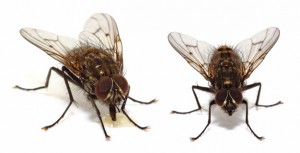
Moths
Indian Meal Moths
Indian Meal Moth (Plodia interpunctella)
The Indian meal moth (Plodia interpunctella) is the most common household moth that can reproduce in many homes. It develops as a pest of various foods commonly found in pantries. The caterpillars or larvae can seriously damage susceptible food items and the adult moths can become annoying as they fly through the home. They are a common grain-feeding pest found around the world, feeding on cereals and similar products.
General Biology
All stages of the Indian meal moth may be found in homes. The adult is a small moth, about 3/8 inch long with a wing span of about 5/8 inch. The overall body color is generally dirty gray but the tip half of the wing is rusty brown or nearly bronze. The moth larvae are off-white with brown heads. The entire life cycle of this species may take 30 to 300 days. Female moths lay between 60 and 400 eggs on a food surface, which are ordinarily smaller than 0.5 mm and not sticky. The eggs hatch in 2 to 14 days. The larval stage lasts from 2 to 41 weeks, depending on the temperature, which makes this insect very problematic in homes. The adults emerge, mate and lay eggs. Since the moths do not feed they usually survive little more than a week. During this time the female may deposit over 200 eggs, laid either directly on food or in crevices adjacent to the stored foods on which they feed.
Control
The first step is to identify all sources of infestation. The presence of some webbing is usually the most effective way to determine which items are infested. After larvae or moths have been found, it is important to throw out all food sources that are not in very tightly sealed containers. The moths are able to get into surprisingly tight spots, including sealed bags and Tupperware containers. Nontoxic traps are also available to inhibit the development of adult moths and precipitate their destruction. Moths often do not even need a lure, as common glue traps sometimes work well to reduce the number of adults.
Clothes Moths
Drain Fly (Psychodidae)
The drain fly is a small true fly with short, hairy bodies and wings giving them a “furry” moth-like appearance. They are common nuisance in/around homes and commercial buildings, including sewage treatment plants. Adult drain flies are typically nocturnal and associated with damp habitats. Adult drain flies have long antennae and leaf-shaped looking wings. Since these flies originate in filthy conditions, there is the possibility of human health disease transmission.
General Biology
Adult drain flies are small (1/6 to 1/5 inch long), fuzzy, dark colored insects with the body and wings densely covered with hairs. They are weak fliers and fly only a few feet at a time. Drain flies breed in polluted, shallow water or highly moist organic solids. You will find the eggs, larvae and pupae in the muck, slime, or gelatinous film often accumulating on the sides of drains and condensate pipes for air conditioners, in the sewage filtration tanks, septic tanks and moist compost.
Control
The key to solving a drain fly problem is to find and eliminate the source, which are the areas of excess moisture and a buildup of organic debris. The most effective method to correct (or to prevent) drain fly problems is to clean toilets, drainpipes and traps to eliminate any gelatinous rotting, organic matter, thereby eliminating the larval food source. Indoors, aerosol sprays of pyrethrins will kill adult drain flies, giving temporary control, but they are not a real fix for the problem.
Clothes Moths (Tineidae)
Clothes moths (Tineidae) are probably best known as pests of stored woolens, but they also eat other fibers including hair, shed pet hair, fur, silk, felt and feathers. Soiled, mixed fiber products may also be damaged. Infestations can grow undetected because they prefer dark, quiet areas to feed and develop. They can cause serious damage to clothing, bedding, floor coverings, upholstery, and other items.
GENERAL BIOLOGY
Clothes moths are small (about 1/2-inch wingspan), generally tan to brown, moths. The most commonly found species are, the webbing clothes moth (Tinea pellionella (Linnaeus)) and the casemaking clothes moth (Tinea bisselliella (Hummel)). Though similarly colored, the casemaking moth has distinguishing dark marks on its wings. The larvae are whitish to cream colored caterpillars with brown heads. The life cycle is 65 to 90 days. Casemaking clothes moth larva, build a silk case around themselves as they feed and grow. Particles of the food source and fecal pellets may be attached to the outside. Clothes moths adults avoid light, and prefer undisturbed areas such as storage bins, closets, basements and attics. Creases, corners or folds of fabric are favored living areas. Female clothes moths seldom fly, and prefer to walk or hop about. If small moths are flying around in the kitchen or other open areas, they are probably grain moths from an infested pantry product like cereal or flour. Adult clothes moths do not damage fabric because they do not feed.
CONTROL OPTIONS
Preventive control is best. Dry clean or launder woolens and other fabrics before storing. Soiled items provide the trace salts, minerals, and vitamin B required for larval development. Cleaning removes attractants. Storage should be in tight containers. Cedar chests and closets are not very effective standalone control.
Vacuum the edges of rugs and carpets. Use a crevice tool to vacuum along baseboard and seams in closets. Run dryer safe clothing through the dryer to kill eggs and caterpillars. Clean out air ducts where the larvae may feed on lint, shed pet hair and other accumulated fibers. Remove or treat bird or animal nests, or animal carcasses in an attic, chimney or wall void.
Never use household insecticides to treat clothing. Professional dry cleaners can apply protection. Cold storage and treatment are options.
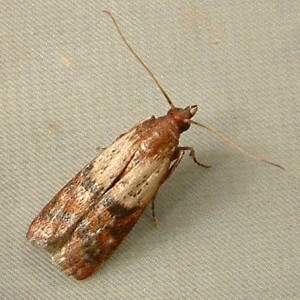
Springtails
Springtails
Springtails (Collembola)
Springtails are tiny, wingless insects in the Order Collembola. They develop large numbers in moist soil, mulch and decaying leaves, and can be found in homes with high humidity, mold, and other favorable conditions. Homeowners may discover large numbers of these insects on patios, in swimming pools, or areas near exterior doors. They are beneficial to soil because they feed on decaying, damp vegetation, returning nutrients to the soil in a form used by plants.
General Biology
Springtails vary in length from a quarter millimeter to 6 millimeters, though normally they are about 1 millimeter long. They are wingless in all stages, and the young though smaller, look like adults. They have colors ranging from white to yellow, or shades of gray. They have a forked appendage, resembling a lever, called the furcula. The furcula is attached to the tip of the abdomen, and is held to the abdomen when the insect is at rest. When disturbed, the furcula is released, striking the ground, causing the insect to spring into the air. They can spring about 4 inches into the air. The common name, springtail comes from this ability.
The Order Collembola has two suborders, best identified by body shape. One appears long and narrow, while the other is more rounded. There are seven families including 650 species in North America. There have been 3600 species discovered worldwide, and they are found from the Arctic to the tropics.
WHY ARE THEY A PROBLEM?
Springtails are probably best described as occasional invaders under most conditions, though they can become pests due to their large numbers. They are harmless and do not bite, sting or transmit diseases. They are attracted to lights and may come inside in large numbers when the weather is dry or after heavy rain. People with potted plants may unwittingly bring springtails into their home and support indoor breeding with well watered plants. Leaks and moist environments in or near homes provide breeding areas which contribute to interior invasions.
CONTROL OPTIONS
Springtails really require no chemical insecticides to control them inside. They can be killed with a mist of dishwashing soap in water. Mix to about 1% soap solution. Let potted plants dry out a bit before bringing inside and avoid overwatering once inside. Be sure to caulk, seal and weatherstrip the home to prevent entry from outside. If chemicals are chosen, spot treatment and crack and crevice treatment can be made with properly labeled insecticides.
Outdoor population control starts with removal of breeding sites and moisture control. Don’t allow mulch to become too deep. Keep compost piles, decaying leaves and vegetation, away from the house. Allow the soil to dry between watering and keep the soil from becoming too acidic to help reduce populations near the house. Soapy water or insecticidal soap can be used to treat living areas such as soil or mulch. If broadcast or barrier treatment with insecticide is chosen, read and follow the label instructions carefully.
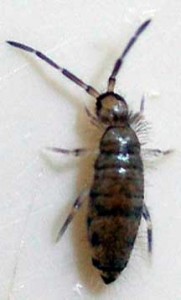
Bees and Wasps
European Hornet
European Hornet (Vespa crabo)
The European Hornet is the largest European eusocial wasp. Females have stingers which can be very harmful. This species is not particularly aggressive except when defending the nest, and care must be taken when in its proximity, as the stings are quite painful. As with most stinging insects, European hornets will sting in self-defense when grabbed or stepped on. European hornets are often mischaracterized as very aggressive and dangerous, and are greatly feared by some people. Some people believe that “three stings from the European hornet can kill an adult human, and that seven can kill a horse”. These are common myths – a sting from a European hornet isn’t any more dangerous than any other wasp sting, and European hornets are less aggressive than other wasps.
General Biology
European hornets are attracted to lights at night, but are not attracted to human foods and food wastes. However, they can totally destroy fruits, such as apples, while the fruit is still on the tree. The queen measures 25 to 50 mm long; males and workers are smaller. European hornets rarely build nests that are free hanging or in unprotected areas. Frequently, the nest is built at the cavity opening, rather than deep within. As winter approaches, the workers die off. The future queens abandon the nest and seek out shelter in protected places, such as under loose bark, in rotting stumps, and hollow.
Control
Control is best achieved by applying a pesticide directly into the nest at dusk. Use any aerosol “Wasp & Hornet” spray that propels the insecticide about 10-15 feet. Direct the spray into the nest opening for 5-10 seconds, then move quickly away from the area to avoid any of the wasps that may emerge from the nest. We advise the use of professional pest control services when controlling a hornet nest.
Paper Wasp
Paper Wasp (Polistinae)
Paper wasps gather fibers from dead wood and plant stems, which they mix with saliva, to construct water-resistant nests made of gray or brown papery material. Nests are often found underneath the eaves of homes, and in or on structures and plants. Their territorial behavior can lead to attacks on people, painful stings, and potentially fatal anaphylactic reactions in some individuals. Paper wasp nests in human-inhabited areas may present an unacceptable hazard.
GENERAL BIOLOGY
Paper wasps are 3/4 to 1 inch long, slender, narrow-waisted wasps with smoky black wings that are folded lengthwise when at rest. Paper wasps are semi-social insects and colonies contain three castes: workers, queens and males. Fertilized queens, which appear similar to workers, overwinter in protected habitats such as cracks and crevices in structures or under tree bark. Paper wasps prey on insects such as caterpillars, flies and beetle larvae, which they feed to their larvae. They actively forage during the day and all colony members rest on the nest at night. Stings from paper wasps typically cause localized pain and swelling, but whole body effects, including severe allergic reactions, resulting in death, do occur in sensitive individuals or when many stings occur. Males are incapable of stinging because the stinger on the females is a modified egg-laying structure, called an ovipositor, and it is not present in males.
CONTROL OPTIONS
The first step in wasp control is to correctly identify the insect and locate its nesting site. The best time of the year to control wasps is in spring after the queen has established her nest and while the colony is still small. Small wasps, commonly called ‘Pygmy Wasps’ often begin to nest as early as February in north Florida. Mechanical control without insecticides is possible for small, exposed nests. A spray of detergent solution can make mechanical control (foot in shoe) an easier technique to use on small nests.
Honey Bees
Honey Bee (Apis mellifera)
The Honey Bee is one of the most familiar insects in the world. This insect plays a vital role in both human and natural world. Honeybees are social insects, such as ants and termites that live in colonies. They divide the labor in the nest so members have different functions, such as queens, workers or soldiers. In the wild, they create elaborate nests called hives containing up to 20,000 individuals during the summer months. Honey bees are attracted to gardens and fields that offer a variety of flowering vegetation. Honey bees collect sugar, fruit juices, syrups and other sweet items from various flowers. They also collect pollen and nectar from a variety of flowering plants, including milkweed, dandelions, clover, goldenrod and a variety of fruit trees. Only workers forage for food, consuming as much nectar from each flower as they can.
DESCRIPTION AND BEHAVIOR
The honeybee is approximately 1.3 cm in length. The queen bee is the largest type of bee. The smallest type is the worker bee, the non-queen females. In between the queen and the worker is the drone, the only male type of bee. A queen bee may live from two to five years and, except for a short period at the end of her life when one of her daughters takes over the colony; she is the only egg-laying female. All the members of the colony, whether drones or workers, are her offspring. She spends all her time laying eggs, perhaps up to 1500 a day, each one being placed in a wax cell made by the workers. A honey bee has a poison gland in her abdomen. When she stings another insect, she can pull the stinger out of the insect’s body and either get away or can continuously sting the insect. But if a bee stings a person or a large animal the stinger sticks in the animal’s tough skin and keeps pumping poison, which will eventually kill the bee after she pulls out and rips her abdomen.
IMPORTANCE
The important products from honeybee production are royal jelly, beeswax, pollen, propolis, honey and pollination. Honeybees produce honey, which is the complex substance made when the nectar and sweet deposits from plants and trees are gathered, modified and stored in the honeycomb by honey bees as a food source for the colony. Honeybees are the most economically valuable pollinators of agricultural crops worldwide. Bee pollination of agricultural crops is said to account for one-third of the U.S. diet.
Although bees are of economic importance worldwide, they also can be PEST. Their venomous sting has the ability to cause immense pain and in some cases cause death to humans and other mammals. The best approach to controlling a bee problem is to avoid it at all cost and call a professional pest control company that can eliminate the bee problem.
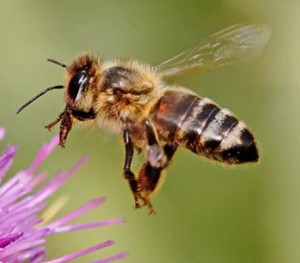
Fleas and Ticks
Fleas
Flea (Siphonaptera)
Fleas are wingless insects whose mouthparts are adapted for piercing skin and sucking blood. Fleas prefer to live on dogs and cats, but may also be found on humans and other available warm-blooded animals. Pet owners may not be bothered by fleas until their pet is gone for a lengthy period of time, and the fleas must find another place to go. This is when they begin to bite humans. Bites frequently occur around the waist, ankles, armpits, and in the bend of the elbows and knees.
LIFE CYCLE AND DESCRIPTION
Fleas are small, agile, usually dark colored, wingless insects with tube-like mouth-parts adapted to feeding on the blood of their hosts. Their bodies are laterally compressed, permitting easy movement through the hairs or feathers on the host’s body. Fleas have long legs which are adapted for jumping long distances. They can jump up to 200 times their own body weight. The flea life cycle begins when the female lays her eggs after feeding. Adult fleas must feed on blood before they can become capable of reproduction. Once laid, the eggs take around two days to two weeks to hatch. Flea larvae emerge from the eggs to feed on any available organic material such as dead insects, feces, and vegetable matter. They are blind and avoid sunlight, keeping to dark places like sand, cracks and crevices, and bedding. Once the flea reaches adulthood its primary goal is to find blood.
DISEASES AND CONTROL
Adult fleas are not only a nuisance to humans and their pets, but can cause medical problems and act as a vector for several diseases including flea allergy dermatitis (FAD), tapeworms, secondary skin irritations and, in extreme cases, anemia. They can also cause bubonic plague between rodents and humans by carrying Yersinia pestis bacteria, Murine typhus (endemic typhus) fever, and in some cases Hymenolepiasis (tapeworm) can also be transmitted by fleas. Flea control is best achieved with a simultaneous, coordinated effort involving strict sanitation, pet treatment and premise treatment (both indoors & outdoors).
Tick
Tick (Ixodoidea)
Ticks are blood-feeding parasites that are often found in tall grass and shrubs where they will wait to attach to a passing host. Although ticks are commonly thought of as insects, they are actually arachnids like scorpions, spiders and mites. There are two groups of ticks, sometimes called the hard ticks and soft ticks. Hard ticks, like the common dog tick, have a hard shield just behind the mouthparts (sometimes incorrectly called the head); unfed hard ticks are shaped like a flat seed. Soft ticks do not have the hard shield and they are shaped like a large raisin. Soft ticks prefer to feed on birds or bats and are seldom encountered unless these animals are nesting or roosting in an occupied building.
DESCRIPTION AND BEHAVIOR
Young ticks have six legs, and mature ticks have eight legs. They vary in size and appearance depending on the species. Ticks are small, round, parasitic arachnids that cling to one spot on their host, insert their head under the skin and engorge themselves on blood. Every class of terrestrial vertebrate animal, including amphibians, can get a tick parasite. There are over 850 different species of ticks. All ticks have four life cycle stages. The female tick must have a blood meal in order for eggs to develop. The eggs are laid in soil or leaf litter after the female drops off the host. These eggs hatch into larvae. The larva is the smallest stage and can be recognized by having only 3 pairs of legs. These seed ticks are produced in great numbers. They must find a host and take a blood meal in order to molt to the next stage called the nymph. If the nymph can feed on a host, it will develop into the adult tick.
PREVENTING AND PROTECTING AGAINST TICKS
The best way to protect against tickborne illness is to avoid tick bites. This includes avoiding known tick- infested areas. Make sure the property around your home is unattractive to ticks. Because ticks are sensitive to dry conditions and do not thrive in short vegetation, they are seldom a problem in well-maintained lawns. Free-roaming dogs and cats are much more likely to encounter ticks than those that are confined to the home or yard. If ticks are found on pets, contact your veterinarian for information about an appropriate tick treatment. To dispose of a tick, drop it into alcohol to kill it, then dispose of it. Flushing the tick down the toilet will not kill them. Squishing them with a thumbnail is not recommended. If you have been bitten, then save the tick in a jar of alcohol for identification, to help decide whether possible infection has occurred.
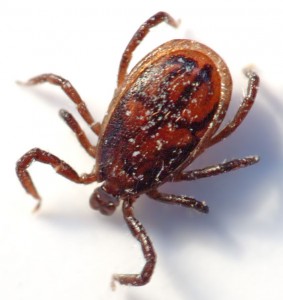
Roaches
American Roach
American Roach (Periplaneta americana)
American Roaches is the largest species of common cockroach. They are usually particularly located in the southern United States and are referred to as Palmetto bugs or Waterbugs. The American cockroach is distinctive because they are reddish brown in color and they have a yellow band or edge on their body behind their head. This roach is the only type that has the yellow band behind their neck and also has the yellow band behind their head. The American roach is typically seen in damp areas, but can be seen anywhere that there is access to water. This type of roach is often seen around the perimeter of houses, sewers, basements, crawl spaces, porches, and even in your kitchen cabinets.
LIFE CYCLE AND FEEDING
American roaches have a quite rapid and impressive lifestyle. Females will produce egg cases and then carry them around on the tip of their abdomen for a few days. After at least two days have passed, the female will then hide the egg case, which is about 3/8 inch long, brown, and rectangular in shape. The cockroaches will not hatch for another 6 to 8 weeks after the female has hidden the egg case with care. Adults will take up to a year to mature, and females can produce up to 150 baby cockroaches during their life. Because the American roach is an omnivore, it can survive just about anywhere and will feed on just about anything. The American cockroach is a scavenger that feeds on decaying organic matter and a variety of other foods. It is particularly fond of fermenting foods.
CONTROL
In large populations, treating outside around doors, windows, pipe openings, and dryer vents can decrease continual invaders from entering your home. Applying insecticides on the inside on the baseboards near the entry points also helps American roach populations. On the inside-apply around the plumbing under the sinks and washer and dryer connections. You don’t have to treat all the interior baseboards, just the corners and baseboards inside the garage and basement areas. It is very helpful to eliminate food materials as much as possible as well as harborage areas to reduce the population.
German Roach
German Roach (Blattella germanica)
German cockroaches are the most common roaches found in homes and apartments, restaurants and supermarkets, hospitals, and other buildings associated with people. Did I mention airplanes and cruise ships? No? Well… they enjoy traveling just as much as the American roaches which sailed the ocean blue with Christopher Columbus! They eat many of the foods we enjoy, and can foul our food, damage wallpaper and books, eat glue from furniture, and give homes an unpleasant odor. Some people are allergic to roaches, and German cockroaches can transfer bacteria which contribute to diseases such as Salmonella that result in food poisoning, dysentery, or diarrhea. Studies have shown German cockroach infestations can cause childhood asthma.
WHAT DO THEY LOOK LIKE?
Adult German cockroaches are small (about 1/2 to 5/8-inch long) light tan to medium brown with two dark stripes (separated by a lighter stripe), which run lengthwise on the body behind the head. They have wings, but fly only when forced off a surface. Young roaches (nymphs) are wingless and nearly black with a single light stripe, separating two black bands, running down about halfway of the middle of the back. Egg capsules are light tan and less than 1/4-inch long. In parts of Florida, Asian cockroaches (physically a German roach twin) are found in very large populations and can make this identification a bit more difficult. However, Asian cockroaches fly readily and well, and prefer the great outdoors.
HOW CAN THEY BE SO SUCCESSFUL AROUND MY HOUSE?
German cockroach females carry the egg capsule protruding from their abdomen until about 24 hours before the eggs are ready to hatch. The case is dropped in a secluded location, the nymphs emerge within one day and are sexually mature 45-90 days later under the conditions found in most homes. A female may produce four to eight cases during her lifetime, each containing 30 to 48 eggs. Females live about 6-1/2 months and males slightly less, but they produce more eggs and have more generations per year (three to four) than other roaches. 300,000? That number is one of the more spectacular estimates of an unchecked German roach population produced in a year by the introduction of one pregnant female into an environment where food and water are relatively available. Maybe you would you prefer one percent of that estimate (3000) in your home?
During the day, they hide in darkness, gathering behind, under and in cracks around cabinets, closets or pantries, and appliances. If they are seen regularly during the day, the population is large. Without food or water, adults may die in two weeks, but can live a month with only water.
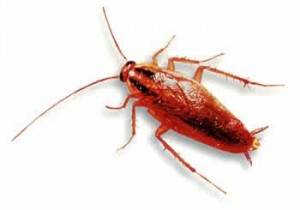
Mosquitoes
Mosquitoes
Mosquito (Culicidae)
Mosquitoes have been one of the most significant pests in the history of humankind. Their importance as medical pests continues today, particularly as vectors of organisms that cause infectious diseases affecting millions of people per year. There are about 3,500 species of mosquitoes found throughout the world. In some species, female mosquitoes feed on humans, making them responsible for passing the diseases they vector. They are found in many different environments, from the Arctic to subtropical and tropical regions.
LIFE CYCLE AND DESCRIPTION
Adult mosquitoes are distinguished by their long proboscis…think of a tiny hypodermic needle drawing your blood, and scales along the wings veins. Though females must feed on blood to produce viable eggs, they also feed on nectar, and are responsible for transmitting diseases. The males feed on nectar and other plant exudates. Like butterflies, mosquitoes undergo a complete metamorphosis, consisting of an egg, larva, pupa, and adult stage. All mosquitoes must have water to complete their life cycle. The type of water in which the mosquito larvae are found, can be an aid in the identification of the species. Adult mosquitoes have very distinct preferences for the types of water formations in which to lay eggs. Some lay eggs in containers such as tree holes, old tires, bottles, clogged gutters, and flower pot bottoms which periodically hold water. Container breeders are the most common nuisance around most homes. Others prefer semi permanent formations, like tide water pools in salt marshes, sewage effluent ponds, stagnating tributary overflows, and floodplains. Temporary sources include irrigated pastures, rainwater and snow ponds, etc. Each species therefore has unique environmental requirements for the maintenance of its life cycle.
DISEASES AND CONTROL
Mosquitoes act as vectors of several very important human diseases like MALARIA, Yellow Fever, Dengue Fever, Filariasis, West Nile Virus and Encephalitis. All these diseases, if not treated can result in death. Control measures against mosquitoes may be aimed at the larvae or at the adults. Control methods may involve the elimination or modification of larval habitat, or treatment of the habitat with insecticides. Control of adults may include insecticides, or preventive techniques. Neighborhoods are occasionally sprayed to prevent disease and nuisance caused by large mosquito numbers.
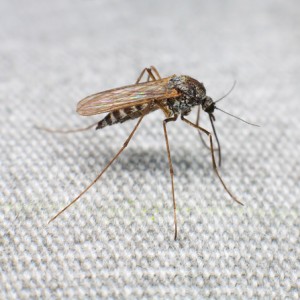
Bedbugs
Bedbugs
Bedbugs (Cimex)
Bedbugs are small, elusive, and parasitic insects of the family Cimicidae. They live strictly by feeding on the blood of humans and other warm-blooded animals. The name ‘bed bug’ is derived from the insect’s preferred habitat infesting houses and especially beds or other common areas where people may sleep. Bedbugs, though not strictly nocturnal, are mainly active at night and are capable of feeding unnoticed on their hosts.
WHAT DO THEY LOOK LIKE AND WHERE ARE THEY FOUND?
Adult bedbugs are reddish-brown, flattened, oval, and wingless. Bedbugs have microscopic hairs that give them a banded appearance. A common misconception is that they are not visible to the naked eye. Adults grow to 4 to 5 mm in length and 1.5 to 3 mm wide. Newly hatched nymphs, which are as small as 1.5 mm, are translucent, lighter in color and become browner as they molt and reach maturity. Adult females can deposit one to five eggs a day, and may lay 200 to 500 eggs in a lifetime. Under normal room temperatures and with an adequate food supply, bed bugs can live over 300 days. Bed bugs can live in any area of the home and can reside in tiny cracks in furniture as well as on textiles and upholstered furniture. They tend to be most common in areas where people sleep and generally concentrate in beds, including mattresses, box springs, and bed frames. Other sites where bed bugs often reside include curtains, the corners inside dressers and other furniture, cracks in wallpaper (particularly near the bed), and inside the spaces of wicker furniture. Since bed bugs can live for months without feeding, they can also be found in vacant homes.
DISEASES AND CONTROL
Bedbugs seem to possess all of the necessary prerequisites for being capable of passing diseases from one host to another, but there have been no known cases of bed bugs passing disease from host to host. There are at least twenty-seven known pathogens that are capable of living inside a bed bug or on its mouthparts. Extensive testing in laboratory settings concludes that bed bugs are unlikely to pass disease from one person to another. Therefore bedbugs are less dangerous than some more common insects such as the flea. Controlling a bed bug infestation is a difficult task that requires removal or treatment of all infested material and follow-up monitoring to ensure the infestation has been eliminated and does not return. Management will require employing several nonchemical methods such as vacuuming, washing bedding at a high temperature, using steam or heat treatment, and sealing up hiding places. Insecticides may be required to eliminate serious infestations. Make sure to call a pest control professional due to the increasing difficulty of eliminating a population of bedbugs.
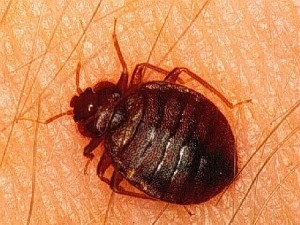
Termites
Drywood Termites
Drywood Termite (Kalotermitidae)
Drywood termites are primarily found in warm coastal regions. Their range includes the southern tier of states, from North Carolina through the Gulf Coast and Texas, into the coastal areas of California and Hawaii. Though the species vary, they generally infest dry, sound wood, producing damage and fecal pellets unique to this insect. Fecal pellets, discarded wings, or swarmers/alates (winged reproductives) may be the first signs of infestation a homeowner notices. Swarmers are about 7/16th of an inch long, including the wings, and vary in color from a dark brown to yellowish tan. Size varies with species.
GENERAL BIOLOGY
Like ants, drywood termites are social insects that live in colonies consisting of offspring from an original pair (male and queen) of reproductive swarmers. There are three distinct stages of growth; egg, immature (not a true worker caste) and adults. Drywood colonies are comparatively small (a few thousand termites), develop slowly, and can be widespread throughout a structure. They do not need contact with the soil, do not build mud tubes, and can infest individual pieces of furniture. Drywood termites produce uniquely shaped pellets which may be thrown out through kick holes. Pellets may form conical piles on surfaces below the kick holes, and are usually the first indirect evidence of an infestation. They eat both spring and summer growth wood, often leaving the wood hollow below a thin veneer. Subterranean termites feed primarily on the soft spring growth, leaving the appearance of the pages of a book.
INFESTATION AND CONTROL METHODS
Colonies are established in areas inaccessible to people, like the roof and eaves, behind drywall and siding, inside walls, and in attics and crawlspaces. They need no outside source of moisture or soil contact to survive. Any home with wood components is vulnerable for a drywood termite infestation, whether it is new, old, wood-framed, concrete block or brick. Infested, antique or used furniture, acquired from any source can act as a Trojan Horse in a new home. There are a variety of control options that can reduce your chance for a drywood termite infestation or even to eliminate the problem. Reduce the potential for drywood termite infestations by eliminating infested wood sources near the structure. Sealing and caulking the wood to prevent termite entry or even removing infested wood if it can be located helps to reduce the potential for infestation. One of the most reliable control methods for this problem is fumigation. If done properly, this method can kill 100% of the colony.
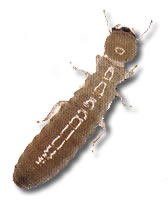
More Buggs
Asian Lady Beetle
Drywood Termite (Kalotermitidae)
Drywood termites are primarily found in warm coastal regions. Their range includes the southern tier of states, from North Carolina through the Gulf Coast and Texas, into the coastal areas of California and Hawaii. Though the species vary, they generally infest dry, sound wood, producing damage and fecal pellets unique to this insect. Fecal pellets, discarded wings, or swarmers/alates (winged reproductives) may be the first signs of infestation a homeowner notices. Swarmers are about 7/16th of an inch long, including the wings, and vary in color from a dark brown to yellowish tan. Size varies with species.
GENERAL BIOLOGY
Like ants, drywood termites are social insects that live in colonies consisting of offspring from an original pair (male and queen) of reproductive swarmers. There are three distinct stages of growth; egg, immature (not a true worker caste) and adults. Drywood colonies are comparatively small (a few thousand termites), develop slowly, and can be widespread throughout a structure. They do not need contact with the soil, do not build mud tubes, and can infest individual pieces of furniture. Drywood termites produce uniquely shaped pellets which may be thrown out through kick holes. Pellets may form conical piles on surfaces below the kick holes, and are usually the first indirect evidence of an infestation. They eat both spring and summer growth wood, often leaving the wood hollow below a thin veneer. Subterranean termites feed primarily on the soft spring growth, leaving the appearance of the pages of a book.
INFESTATION AND CONTROL METHODS
Colonies are established in areas inaccessible to people, like the roof and eaves, behind drywall and siding, inside walls, and in attics and crawlspaces. They need no outside source of moisture or soil contact to survive. Any home with wood components is vulnerable for a drywood termite infestation, whether it is new, old, wood-framed, concrete block or brick. Infested, antique or used furniture, acquired from any source can act as a Trojan Horse in a new home. There are a variety of control options that can reduce your chance for a drywood termite infestation or even to eliminate the problem. Reduce the potential for drywood termite infestations by eliminating infested wood sources near the structure. Sealing and caulking the wood to prevent termite entry or even removing infested wood if it can be located helps to reduce the potential for infestation. One of the most reliable control methods for this problem is fumigation. If done properly, this method can kill 100% of the colony.
Silverfish
Silverfish (Lepisma saccharina)
Silverfish can be a problem year round. Attics are a favorite place for silverfish due to the abundant food sources due to the recycled blown in paper insulation and storage boxes. You may see silverfish trapped in sinks and bathtubs because they enter
seeking moisture and are unable to climb a slick vertical surface to escape. Silverfish can damage book bindings, wallpaper, paper goods and dry foods. They may eat holes, irregular shaped in the wallpaper to get to the paste. Silverfish may bite very small holes in various fabrics, including cotton, linen, and silk, even though they cannot digest either linen or cotton.
GENERAL BIOLOGY
Silverfish are small, wingless insects in the order Thysanura. Silverfish are nocturnal, elongated, and flattened insects typically about 1/2 inch long, with a uniform silvery color over the upper surface. The bodies are broad at the front, and gradually tapering toward the rear. Silverfish are active at night or are active in dark places found throughout the structure and they can be a problem year round. Silverfish consume matter that contains polysaccharides, such as starches and dextrin in adhesives. These include glue, book bindings, paper, photos, sugar, coffee, hair, carpet, clothing and dandruff. Silverfish can also cause damage to tapestries. Other substances that may be eaten include cotton, linen, silk and synthetic fibres, and dead insects or even its own exuvia (molted exoskeleton). During famine, a silverfish may even attack leatherware and synthetic fabrics. Silverfish can live for a year or more without eating.Silverfish are considered a household pest, due to their consumption and destruction of property.Although they are responsible for the contamination of food and other types of damage, they do not transmit disease.
CONTROL OPTIONS
The control of silverfish may include removing sources of any undue moisture, such as faulty plumbing or condensation that provide the humidity favored by these pests should be eliminated. Remove old books, magazines and newspapers. Inspect fabrics that have been stored for long periods for damage or infestation. If books or fabrics will be in storage, store these items in sealed plastic containers. Many times valuable books or papers have infestations of silverfish. Insecticide treatments should be targeted to harborage areas such as cracks and crevices, around baseboards, closets and attics. With large infestations, small holes may be drilled in walls to treat the wall void.
